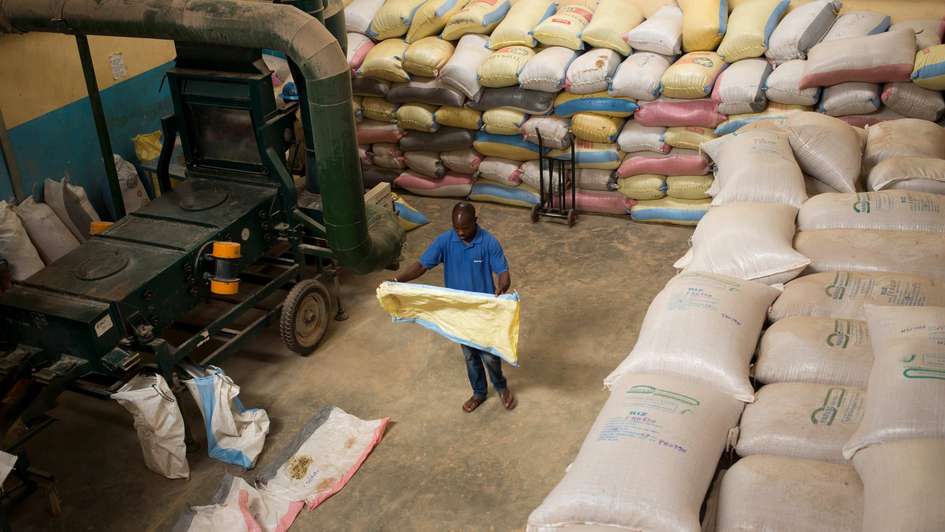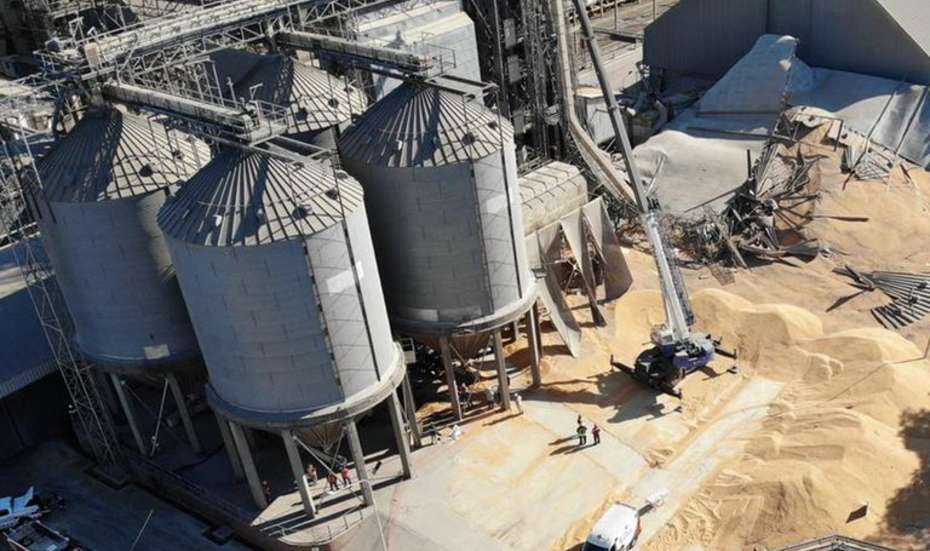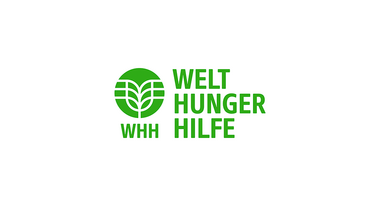Market Power and Powerlessness - Competition Law Fails to Keep Up with Oligopolies
Structural inequality and bargaining power in global food value chains: a competition law toolkit assessment

This article was originally published in the German-language "Fachjournal Welternährung" (World Food Security Journal).
Farmers typically face high levels of concentration in both upstream input markets (fertilisers, crops) and downstream markets (manufacturing, distribution and retail markets) – they are subject to superior bargaining from both directions.1 Concentrated or monopolized food markets may create structural conditions that lead to inequality and unfairness, beyond their usual effects on higher prices and lower output. “Structural inequality” denotes the vulnerability to domination that a type of market actors may experience due to social structure processes, beyond their control.2
Concerns over structural inequality call for an active competition law enforcement agenda against mega-food corporations.3 Some even argue that competition law should specifically address the freedom of competition of farmers, particularly in developing countries, as this could be as, if not more important, than protecting consumer welfare.4 Structural inequality may also become an important aim of more mature competition law systems in developed countries, in particular in order to tackle superior bargaining power and situations of economic dependence in the food sector.
Consumer protection at the center
There is a wide agreement that competition law may tackle superior (or unequal) bargaining power if this leads to negative consumer welfare effects in terms of pricing, choice or innovation. These “competition law concerns” are carefully distinguished from “non-competition” law concerns (e.g. the protection of small and medium enterprises or farmers, as weaker parties in the exchange). However, more broadly and at a higher level structural inequality may play a more significant role. One view is that the traditional competition law and economics concepts should be adjusted to cater for situation of structural inequality. For instance, as structural market power is not considered necessary for establishing the power one undertaking has towards one or more trading partners, market shares as low as 20% may be found sufficient for the finding of a superior bargaining position.5

Another view argues for the adoption of specific provisions tackling structural inequality in certain sectors of social importance, as is the food sector. Such provisions have been typically considered by “mainstream” scholarship, as a by-product of the political pressure of organised interests of small and medium undertakings or farmers, resulting in the adoption of mainly redistributive statutes that restrict competition and (presumably) economic efficiency. The recent trend has been, at least for Member States in the EU, to adopt and implement such provisions.6
National or regional tools
However, at present there are no dedicated legal instruments to address directly structural inequality, at least at the global level. Some tools exist at a national or regional level.
First, competition law can be used as a sword in order to limit the possible negative effects of consolidation, either controlling ex ante the process of economic concentration through merger control, or in sanctioning ex post conduct that may reduce competition, such as abuse of a dominant position or the constitution of a cartel. However, such tools have significant limits: first, the lack of a global competition law regime, and second, the narrow perspective usually taken by competition authorities regarding the assessment of the anti-competitive effects of mergers or other alleged anticompetitive conduct.
The most recent mergers in the agro-chemical industry were notified to an important number of competition authorities around the world, which approved all of them, in some cases with conditions, and at different timings. Each of these competition authorities focused on the analysis of the merger from the perspective of consumer welfare in their own jurisdiction. This scattered analysis did not take into account the global implications of the consolidation of the sector, in particular vis-à-vis vulnerable farmers in the Global South.

Global cooperation
Hence, it becomes crucial to develop some form of international system of cooperation between competition authorities for such global-dimension transactions. Typically, cooperation between agencies involves discussing evidence and analyzing information. Competition authorities may request waivers from the merger firms to allow information sharing with other competition authorities. Similarly, one may envisage the aligning of the timings of merger reviews firms being requested to notify their mergers for review in parallel across jurisdictions instead of sequential reviews so as to avoid strategic behavior.
Second, competition law may deal with such unbalances of power by reinforcing the bargaining power of farmers and enabling them to form agricultural cooperatives so as to counter-balance that of other segments of the food value chain, downstream but also upstream.7 These specific exceptions/regimes have nevertheless a limited scope, as a result of the focus of competition law on consumer welfare. It is also one issue for collective bargaining to be implemented in order to enhance the farmers’ bargaining position vis-à-vis a dozen of seed and agrochem players, and another one how to strengthen their position towards three integrated platforms across all segments of the food value chain.
Do we need a more integrated framework?
Third, those opposing any expansion of competition law in order to tackle situations of structural inequality have usually hinted to the complexity of the problems raised by the issue of unequal bargaining power, arguing that a more integrated framework is needed. This framework needs to also integrate laws concerning unfair trading practices, contract law and civil law (tort law, European sales law), which seek to deal with the abusive use of unequal bargaining power. This framework also needs to incorporate soft law and self-regulatory, industry initiatives that have emerged in several EU Member States. The argument is often made that competition law may be less effective in dealing with the issue of superior bargaining power than these other legal disciplines.
However, this conclusion has thus far not been premised on a thorough comparative institutional analysis that examines the effectiveness of these various legal disciplines to deal with the observed structural imbalance. This imbalance of power often dissuades farmers from bringing cases to courts and/or competition authorities. The analysis does not also take into account the emergence of the right to food, as a global substantive norm that may influence competition law enforcement.8
Fourth, some jurisdictions have developed specific instruments capable of dealing with unfair trading practices in the food value chain. In the EU, these concerns have resulted in the launch of the European Supply Chain Initiative9, which endorses the principles of fair contracting and seeks to establish a set of ‘good practice’ principles of for the food supply chain, ultimately leading to the adoption of EU Directive 2019/633.10
The Directive is based on the notion that “within the agricultural and food supply chain, significant imbalances in bargaining power between suppliers and buyers of agricultural and food products are a common occurrence” and provides protection to agricultural/ food producers, whether they be natural or legal persons. This protective regime is justified on the basis of different degrees of concentration across the various levels of the food value chain.
However, all these tools operate at a national or regional (EU) level as a global framework to address structural inequality in the food value chain is still lacking. International organizations, such as the OECD and UNCTAD, as well as the International Competition Network (ICN) need urgently to develop a more proactive agenda on this matter.
References
[1] OECD, “Spotlight on Global Value Chains: Does it Mean Shutting Out Small Producers?” in Promoting Pro-Poor Growth: Agriculture (OECD, 2006), 58.
[2] I. Young, Responsibility for Justice (OUP, 2011); Philip Pettit, “Freedom in the Market”, 5 Pol. Phil. & Econ. 131–49 (2006); R. Claassen & L. Herzog, “Why Economic Agency Matters: An Account of Structural Domination in the Economic Realm”, (2019) Eur. J. Pol. Theory, 147488511983218.
[3] MK Hendrickson, PH Howard, DH Constance, “Power, food and agriculture: Implications for farmers, consumers and communities”, in Defense of Farmers: The Future of Agriculture in the Shadow of Corporate Power (J.W. Gibson & S.E. Alexander eds, University of Nebraska Press, 2019), 13.
[4] J. Drexl, “Consumer Welfare and Consumer Harm: Adjusting Competition Law and Policies to the Need of Developing Jurisdictions” in Economic Characteristics of Developing Jurisdictions: Their Implications for Competition Law (edited by M. Gal, M. Bakhoum, J. Drexl, E. Fox and D. Gerber, Edward Elgar, 2015), 265-295.
[5] See J. Kirkwood, “Buyer Power and Exclusionary Conduct: Should Brooke Group Set the Standards for Buyer Induced Price Discrimination and Predatory Bidding?”, (2005) 72 Antitrust Law Journal, 637-644.
[6] Presently, 17 Member States dispose of competition law provisions that address situations of non-structural economic power, such as provisions on abuse of economic dependence and relative market power.
[7] Article 42 TFEU gives unique powers to the EU legislator to decide to what extent the EU competition rules apply to the agricultural sector, taking into account the five objectives of the Common Agricultural Policy (CAP), that is, increasing productivity of agricultural production, ensuring a fair standard of living for agricultural communities, stabilising markets, assuring supplies and ensuring reasonable prices for the consumer. On this basis, several exclusions to the application of EU competition law have been adopted regarding this sector.
[8] See, I. Lianos & A. Darr, Hunger Games: Connecting The Right To Food and Competition Law, in I. Lianos, A. Ivanov & D. Davis (eds.), Global Food Value Chains and Competition Law (CUP, 2021), Chapter 18.
[9] See, https://www.supplychaininitiative.eu/
[10] Directive (EU) 2019/633 of the European Parliament and of the Council of 17 April 2019 on Unfair Trading Practices in B2B relationships in the agricultural and Food Supply Chain, [2019] OJ L 111/59.






